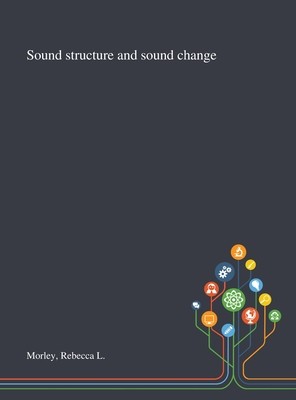
- We will send in 10–14 business days.
- Author: Rebecca L Morley
- Publisher: Saint Philip Street Press
- ISBN-10: 1013294491
- ISBN-13: 9781013294495
- Format: 21.6 x 27.9 x 1 cm, kieti viršeliai
- Language: English
- SAVE -10% with code: EXTRA
Reviews
Description
Research in linguistics, as in most other scientific domains, is usually approached in a modular way - narrowing the domain of inquiry in order to allow for increased depth of study. This is necessary and productive for a topic as wide-ranging and complex as human language. However, precisely because language is a complex system, tied to perception, learning, memory, and social organization, the assumption of modularity can also be an obstacle to understanding language at a deeper level. This book examines the consequences of enforcing non-modularity along two dimensions: the temporal, and the cognitive. Along the temporal dimension, synchronic and diachronic domains are linked by the requirement that sound changes must lead to viable, stable language states. Along the cognitive dimension, sound change and variation are linked to speech perception and production by requiring non-trivial transformations between acoustic and articulatory representations.
This work was published by Saint Philip Street Press pursuant to a Creative Commons license permitting commercial use. All rights not granted by the work's license are retained by the author or authors.EXTRA 10 % discount with code: EXTRA
The promotion ends in 21d.02:43:54
The discount code is valid when purchasing from 10 €. Discounts do not stack.
- Author: Rebecca L Morley
- Publisher: Saint Philip Street Press
- ISBN-10: 1013294491
- ISBN-13: 9781013294495
- Format: 21.6 x 27.9 x 1 cm, kieti viršeliai
- Language: English English
Research in linguistics, as in most other scientific domains, is usually approached in a modular way - narrowing the domain of inquiry in order to allow for increased depth of study. This is necessary and productive for a topic as wide-ranging and complex as human language. However, precisely because language is a complex system, tied to perception, learning, memory, and social organization, the assumption of modularity can also be an obstacle to understanding language at a deeper level. This book examines the consequences of enforcing non-modularity along two dimensions: the temporal, and the cognitive. Along the temporal dimension, synchronic and diachronic domains are linked by the requirement that sound changes must lead to viable, stable language states. Along the cognitive dimension, sound change and variation are linked to speech perception and production by requiring non-trivial transformations between acoustic and articulatory representations.
This work was published by Saint Philip Street Press pursuant to a Creative Commons license permitting commercial use. All rights not granted by the work's license are retained by the author or authors.

Reviews